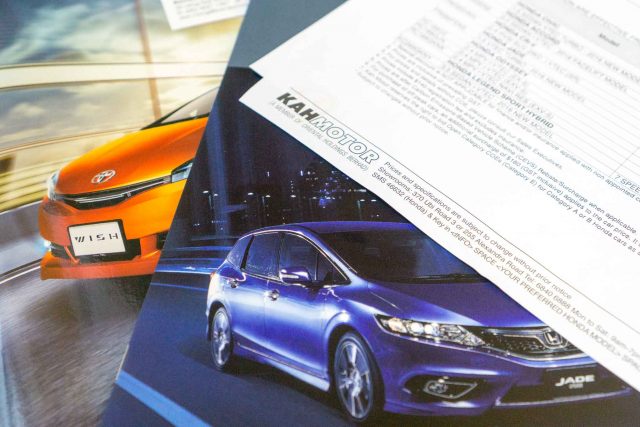For the strangest reason, one of the topmost incoming search keywords to my blog is about cars, even though I don’t blog much about cars, or even about motoring in general. My complaints about MRT and public transport, I’m sure, don’t count.
One of the most oft searched keywords relate to scrapping cars, and the calculation of scrap value, or more correctly known as the PARF rebate. Funny enough, the best way to get the PART rebate is to use LTA’s own e-service. I provide the link too. Here’s the link to LTA’s enquiry tool again, in case you’re looking for it.
But perhaps in the short-term, I might be writing a little bit more about cars again. That’s because, well, I’m sort of in the market to consider a refresh.

A big question about buying cars is with the price. I mean, of course, the price is important anywhere in the world, but it is more so in Singapore because most of the cost in buying a car isn’t the real price of the car itself. There are huge taxes, and there’s that COE component. At this time, COEs are in the region of $55K.
Here’s a simple illustration helpful for new car buyers or those unfamiliar with Singapore’s tax structure. Suppose the original cost of a car you’re looking at is $25K. This is called the open market value (OMV). This car incurs $27K of Additional Registration Fees, and $4K of Excise Duty. GST applicable on OMV and Excise Duty is $1.68K. There’s also a small $140 registration fee. Then, there’s the COE, let’s say it’s $55K. Total cost, from the original $25K, now amounts to $112.82K. That’s not including road tax and insurance, as well as any margin that the local dealership needs to make.
COE is the biggest variable component. Will it go up, or will it go down. It went as low as $2 in 2008. It would be unrealistic to expect to catch that break again. But would it be reasonable to expect COE hovering around the $25K mark? I don’t know. But will it drop below $40K? Perhaps it will. I think it will, maybe after the next year.
The price of COE, of course, depends on the quota available. The quota, I believe, is likely to increase in coming years, when plenty of cars are due for de-registration. There’s a cycle to this madness.
However, for existing car owners, there’s more than COE prices to consider. You see, if you’re holding on to a car that you can either scrap a couple of years later, or sell off now, then there could be more value to sell now then to de-register later.
If you had bought your existing car cheap, the present market value could be higher than its paper value. It’s complicated to explain this logic, but it follows along the line that the car’s depreciation is lower in your hands than what someone is paying to take it off your hands. Having a car with low depreciation is good, but it’s even better that someone’s taking it off your hands at a higher rate.
Buying a car, for most Singaporeans, is likely the 2nd most expensive asset one would ever acquire. Hence it’s important to understand the costs involved. The variability of COE makes car buying really complicated.
Sorry for the late bump of your old post.
But assuming your/our logic, typically the price of my COE Car (renewed) in the future might be higher than the paper (no more parf, left coe rebate) for the car/body due to the increasing COE prices assuming it goes up?
For e.g. I renew my car now for 10 year COE at 28k, in coming 3 years say COE increases back to around 40-50+k, Can i assume someone might be keen to pay more than my paper value (7/10 * 28k) + body value if any, as the cost of car ownership at least from COE point of view have risen ~20k? So I can expect additional price from 0-20k range topup for the increased market value of car or to own the car in general?
Logically yes, in this case you might be able to ask for more than paper value. In practice, you’ll probably fetch a favourable price rather than earn a windfall. 🙂